As a recap: what
were the steps up to the present situation in which religious Truth has
been chased out of our modern culture as being just so much superstition?
-
Let us remember
that over 300 years ago the new science that people like Descartes, Newton
and Locke were putting together began to put a huge gap between its new
world of secular Truth and the older world of Christian Truth.
-
The new science
claimed that the only real Truth was in the world of "facts," ones that
could be clearly shown through careful experiments upon the operation of
the visible or empirical world around us.
-
The new science
claimed that all other truths, and in particular the truths of "revealed"
religion, had no such strong basis in fact and therefore could not be considered
as real Truth.
-
Let us remember
that in the 1800s scientists were even beginning to show how God was not
only unnecessary to our understanding of Truth (Laplace and Darwin) but
that to continue to insist on the reality of religious or revealed Truth
was to engage in dangerous foolishness (Marx).
-
Let us remember
that by the early 1900s "sophisticated" people had concluded that to take
religious Truths too seriously was merely to demonstrate how gullible we
could be. Freud called such people neurotic or "delusional."
-
Even 1600 Presbyterian
pastors agreed that a mature person had to get past all the religious superstition,
including a too-close reading of Scripture. We needed to de-mythologize
Christianity to put it on a firm "factual" basis.
-
Let us remember
that the law courts of America also chased Christianity from public places--now
reserved only for "real Truth" (meaning, the new religion of empirical
science or "secularism")--and banished the practice of Christianity (or
any of the older religions) to the religious ghettos of the dying churches
and synagogues.
-
In Europe this
event didn't even need the cooperation of the courts. Christianity
simply died a death of being ignored by the world-bound culture around
it.

How
did relativity theory begun to “break the box” of scientific "realism"?
-
Even as modern
secular science was establishing its grip over the Western mind and culture,
Albert Einstein was laying the foundations of a new vision of "Truth" that
would work to undermine secularism. In 1905 he published the results
of several experiments that challenged some of the key principles of "empiricism."
-
Most notable of
these challenges was to the empirical notion that Reality exists out there,
on its own, pretty much as human eyes behold it--as "fixed fact."
-
Ever since the
time of Descartes, Newton and Locke we had assumed that the fundamental
material of all reality was tiny bits of hard particles called atoms.
Atoms were the physical building blocks of all reality. Everything
was made up of a combination of these hard particles--at the most basic
level atoms forming into "elements" and these elements into compound molecules
and these molecules into the building material of all life.
-
Einstein however
took a quite different view of reality. His view was that these "hard
particles" of atoms (which in fact no one had ever seen but only guessed
that they were there!) were indeed only points of convergence (coming together)
of forces of energy. He proved his point by being able to
show mathematically that Energy (E)--which acts more like
a wave than a particle in space--was the same as matter or
mass (m) to the ratio of the speed of light (c) squared:
E=mc2!!
-
We know that this
theory was used to break down very unstable matter (such as plutonium)
into its enormous energy equivalent--as an atomic bomb! We know that
this led us to understand how the Sun can "burn" energy at huge rates and
still stay pretty much the same size (it will eventually in hundreds of
millions of years however finally burn out).
-
In something he
called the Relativity Theory, Einstein was also able to show that "reality
out there" shifts and stretches as the universe of energy moves about in
relationship to us (or we move in relationship to it.) There is nothing
"fixed" about the size and movement of the fields of energy that make up
the universe. Depending on our location and speed in time and space,
the "reality" of the energy fields around us will take on different qualities--especially
as our movement begins to approach the speed of light (which Einstein
thought was the outer limit of all "reality.")
-
We may not understand
exactly what this means or how this all looks. But we can understand
the idea that nothing can be said about True about anything, except
in terms of how it relates directly to us. That is what Einstein
meant by "relativity" theory: he meant a theory in which Truth
and Reality depends of how things relate to us. Apart from
such relationship we can say nothing certain about things.
And these "certainties" will differ from observer to observer, depending
on where he or she is and in which direction and at what speed they are
moving in relationship to the thing they are trying to observe (a star,
a galaxy--even an atomic "particle")
-
All in all, Einstein
challenged forever the notion that reality is made up of hard bits of matter
that exist on their own "out there" in the universe. "Hard reality"
may be only fields of energy which our senses convert for us into the form
of visible "matter." The implication of Einstein's discovery
is that Newton's empirical reality may be the true "illusion"--existing
in our minds only as our minds reconstruct energy into what we recognize
as "matter"--and only as it appears in relation to us as we focus our thoughts
on it.
How
did quantum theory further shake loose the hold of the empirical mindset
on modern science?
-
In a way Albert
Einstein started off the quantum revolution with his Relativity Theory.
And at about the same time
Max Planck also made huge contributions
to the development of quantum theory by demonstrating that energy gave
off its power not in a steady stream, but in random or somewhat unpredictable
"jumps" of tiny energy packets he called quanta. Both men
undermined the idea that reality is fixed and absolute in its existence.
-
Other men such
as Niels Bohr, Werner Heisenberg and Erwin Schrödinger
carried the work of quantum physics forward--pointing to the impossibility
of describing reality in absolute terms. Reality had a way of "performing"
in accordance to the expectations of an observer either as a wave or a
particle--or actually both. It was impossible to get more than a
fuzzy "fix" on reality because you could not study both the position of
an atomic particle and its relative direction and speed at the same time.
Furthermore your own observations itself influenced any experiment in such
a way that could never be eliminated. Finally, nothing could be said
to be absolutely true about anything until the actual act of observation
took place. And there is no way of speculating backward before the
event to say what might have been true even a split second before the observation
occurred. In other words, it was wrong to make logical jumps from
what is seen under observation to what reality might be without such observation.
The very act of observation itself was a necessary part of "collapsing"
the potential of reality into its actual observed condition.
-
How could this
be? How could reality not just "exist" in and of itself? Why
did reality have to await the act of actual observation in order for reality
to "be"? Einstein and Bohr argued this point endlessly.
-
Furthermore, later
physicists noticed that atomic phenomena seemed to act in such a way during
an experiment that made it seem that they seemed to "know" whether you
expected them to behave as a particle or as a wave. Now physicists
were saying that even "dead matter" was acting as if it were very much
"alive" and interactive with our own consciousness, even subconsciousness.
Indeed, it could be said that all of reality is very much alive--filled
with the power of life from the smallest sub-atomic particle to the largest
supergalaxy. But how could this be? It defied completely our
Newtonian vision of the concrete, "dead-matter" world "out there."
Somehow all of reality is related to the phenomenon of alive consciousness--in
relationship with the larger environment of equally alive consciousness.
The whole universe is alive with consciousness.
-
Another quantum
physics experiment shook up the world of advanced physics even more.
It was found that two paired atomic particles (one charged positively and
its mate charged negatively) if separated at some distance still kept their
electronic relationship. Thus if the polarity of one of the atomic
particles was reversed--the other partner would also reverse itself automatically
so as to preserve the positive-negative balance. This was exactly
what you would expect. But the fact that they performed their polar
reversals exactly simultaneously was puzzling. They seemed
to be able to communicate to each other--without even the speed of light
being a limiting speed at which they communicated. They communicated
to each other totally simultaneously. Now how could they do that?
Every telecommunication we know about can go no faster than the speed of
light. There is always a second or two delay in the conversation
between a space vehicle and the ground control--a delay that works at exactly
the speed of light. So--how could atomic particles escape that limit
that Einstein was positive was the absolute limit to the universe--in every
respect. Atomic particles, in their signaling their polar action
to each other, operate in such a way that they show no such limitation.
How could this be?
How
has the “big bang” theory reopened among scientists the debate on God?
-
In the 1930s scientists
who studied the stars discovered "red shift" in the light of stars reaching earth, indicating that the stars (all of the stars) were moving
away from our point of observation here on earth. This movement
was away from earth in every direction. It was as if we were a dot
on a balloon and every other point on the surface of the balloon was stretching
away from us--as the balloon was being blown up. There could be only
one conclusion: the universe was in a state of expansion.
-
Furthermore, an
analysis of the rate of expansion suggested another thought. If we
reverse the
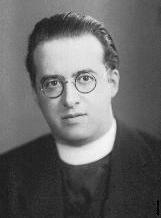 speed and direction of expansion we can begin to think backward
to the time when the expansion first began. By calculating the speed
of expansion in the opposite direction it appeared that everything converges
back on a starting point some 10 to 20 billion years ago (14 billion years
is getting to be a point of consensus for many physicists). speed and direction of expansion we can begin to think backward
to the time when the expansion first began. By calculating the speed
of expansion in the opposite direction it appeared that everything converges
back on a starting point some 10 to 20 billion years ago (14 billion years
is getting to be a point of consensus for many physicists). -
Physicists such
as the Belgian priest Georges Lemaître even suggested as early
as 1927 that the whole process of starting up the universe began as a cosmic
explosion, a "big bang." At first his theories were ignored (except
by Einstein who took a great interest in Lemaître's work).
But gradually the scientific community began to come around to Lemaître's
thinking--where by the 1900s it was becoming more and more the conventional
wisdom of the scientific community--especially after the discovery in outer
space of trace elements of the primal explosion.
-
But how could
a cosmic explosion produce by sheer accident the perfect symmetry of the
universe? If it were one trillionth greater in intensity it would
have consumed all the "matter" making up the universe. If it were
one trillionth lesser in intensity, the explosion would have quickly reached
its greatest extent and gravity would have pulled it all back in upon itself.
-
Some suggested
that there may have been billions of such explosions and that our universe
is simply statistically the one in a billion to have succeeded. But
actually the probability of that is even less than one in a billion.
As one physicist put it, the odds of the universe exploding at exactly
the right intensity to produce the hydrogen, helium, nitrogen, oxygen,
carbon, etc. molecules that make up our universe is in the same order as
standing on one side of the universe and shooting across it to hit a target
on the other side of the universe the size of a quarter! Not a very
likely accident!
-
This raised the
matter of arguing "by design" in favor of the existence of a very meticulous
God. Now the "argument by design" is a very tricky argument that
often fails. But the evidence of very purposeful design in the creation
of our universe is too strong to ignore.
-
But as physicists
protest: this is the business of theologians, not physicists, to
work out. Unfortunately very few theologians are really up on advanced
physics--and thus the issue remains largely unanswered. But we are
headed toward a time when "believers" will want to investigate this matter
more fully.
-
All of this certainly
seems to want to put to an end the hypothesis of Charles Darwin that our
world came forth simply by accident--something that "popular" science has
fully accepted and has been teaching in our schools and public institutions
for most of the last 100 years as a matter of absolute or "religious" Truth.
-
There is one other
feature of the "big bang" theory that we need to mention. Scientists
agree that the big bang was not just simply the explosion of huge amounts
of matter out into empty space, but the big bang included the creation
of the concept of space itself. In fact it also included the creation
of the 4th dimension of time as well. You cannot talk in terms of
where and when things were before the big bang. These dimensions
just simply didn't exist--for both space and time were birthed with the
explosive creation of our universe itself.
 How
has “chaos theory” demonstrated Divine design in creation? How
has “chaos theory” demonstrated Divine design in creation?
-
Meanwhile in yet
even another area of research science has begun to recognize the intricate
design of nature, which turns even "accident" into a well-planned system
of design.
-
Scientists have
always noted that every experiment on the structure of nature includes
a very tiny element of unpredictable exception to every rule of structure,
something considered as a small "noise" in the experiment--something perhaps
related to Newton's second law of thermodynamics that states that there
is a small portion of "breakdown" or "waste" in every event in which energy
is converted into "work." This tiny margin of uncooperative "noise"
was simply discounted as a statistically tiny, but unavoidable error that
typically occurs in every experiment.
-
But some scientists,
such as the meteorologist (studies weather patterns) Edward Lorenz, began
to look more closely at this tiny element of "statistical error"--and began
to notice that this error was in fact the source of a critical dynamic
which kept all systems wondrously flexible and responsive to new situations.
-
The Polish mathematician,
Benoit B. Mandelbrot, even went further and began to map mathematically
the way this error could compound itself mathematically into an incredibly
beautiful geometric figure--that even as it shifted and changed preserved
the fundamental features of its original design--but in new symmetries
and patterns which he called "fractals."
-
With the onset
of the computer, these mathematical "errors" could be reformulated into
an endless array of change and at an almost infinite level or stage of
existence--demonstrating that all things are designed in such a way as
to hold to their original design even as they underwent change--and that
this design was found at all levels of existence of a structure.
What other
branches of science have been adding to this post-Newtonian revolution
in modern science?
-
Chaos theory was
very much like the discovery (1953: James Watson and Francis Crick)
in biology of DNA: an intricate design of life which emerges from a simple
formula of original design--which makes all things unique in their structure--yet
also closely related to each other in that same structure. "Accident"
was certainly a dynamic element of all DNA design--but even there, there
seems to be incredible purpose in the way that even accident works out.
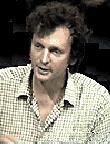 -
Another discovery
(Rupert Sheldrake) was how new biological information is communicated
across or throughout a species in such rapid order that defies Darwin's
notion of "accident." There is something about life that enables
it to communicate "thought" almost mystically across time and space.
-
Just like the
polarized atomic particle we talked about above, "communication" is key
to all life--human or otherwise--and is somehow reflective of the makeup
of the entire universe.
-
One of the most
recent discoveries in this new area of science has been in the mathematical
world of holographics (which we have as evidence on the small pictures
on our parents' credit cards--which are not easily duplicated by a forger).
The bizarre feature of a holograph is not only that it seems to give forth
a 3-dimensional picture on a flat 2-dimensional space--but that every tiny
portion of the holograph is an exact copy of the entire picture (just like
the DNA molecule found in all human cells is a small copy of the genetic
formulation of the entire creature.)
Overall, what
are the "lessons" we can begin to draw from the "new" science or "post-modern"
(or "post-Newtonian") science as it is being called?
-
The most obvious
is that there is nothing accidental about life itself. Things do
not just "happen" as we have supposed for the past few hundred years.
-
We do not live
in a soul-less universe made up of "things" operating according to eternal
mechanical laws. We are beginning to rediscover that all creation
is wondrously alive, changing and developing--all in accordance to higher
design or plans bigger than the things themselves. It is as if all
life is a great orchestra with each unique instrument making its own contribution
to the entire symphony--and all in accordance with the direction of some
Great Conductor.
-
All of life stays
in harmony because of a wonderful system of communication which flows throughout
the entire universe.
-
Humans are unique
because they have the ability to disregard the greater harmony by focusing
on their own inner wills. But in doing so they lose much of the power
of life.
-
It is important
to stay conscious of life's design--a process that requires us to stay
very mindful of the whole structure of created life. We do
so most effectively through prayer and meditation--and through careful
study of the wisdom of the ancients who understood these higher or Divine
Truths through some mysterious power of revelation which made them "prophets"
to the world around them.
-
Behind all this
order stands the One who not only originally created everything--but who
continues to breathe "life" into all existence by His own thoughtful regard
to our universe. Our God does not slumber or sleep--but remains in
a totally "awake" state that keeps the entire universe running.
-
What we do is
participate with God in giving creation proper regard, by beholding its
glory and giving praise to it and its Creator: in short by worshiping
with the heavens and the earth God Almighty, the Master of all that is
and ever will be. By doing this, we ourselves are drawn forward into
an ever greater dimension of being, of heightened existence, of eternal
life.
-
Any questions?
Look to Jesus. He was sent to us to show us exactly how to do all
of this!
|



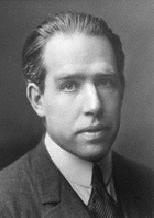
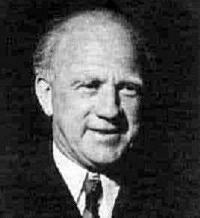
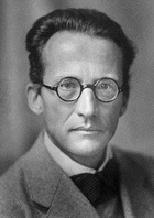
 How
has “chaos theory” demonstrated Divine design in creation?
How
has “chaos theory” demonstrated Divine design in creation?


 Miles
H. Hodges
Miles
H. Hodges